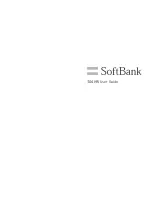
Spectrum Monitor
30.1 Understanding Spectrum Data
SCALANCE W1750D UI
Configuration Manual, 02/2018, C79000-G8976-C451-02
463
Non-Wi-Fi Interferers
The following table describes each type of non-Wi-Fi interferer detected by the Spectrum
Monitor feature:
Table 30- 2 Non-Wi-Fi Interferer Types
Non Wi-Fi Interferer
Description
Bluetooth
Any device that uses the Bluetooth protocol to communicate in the 2.4 GHz
band is classified as a
Bluetooth
device. Bluetooth uses a frequency hop-
ping protocol.
Fixed Frequency (Audio)
Some audio devices such as wireless speakers and microphones also use
fixed frequency to continuously transmit audio. These devices are classified
as
Fixed Frequency (Audio)
.
Fixed Frequency (Cordless
Phones)
Some cordless phones use a fixed frequency to transmit data (much like
the fixed frequency video devices). These devices are classified as
Fixed
Frequency (Cordless Phones)
.
Fixed Frequency (Video)
Video transmitters that continuously transmit video on a single frequency
are classified as
Fixed Frequency (Video)
. These devices typically have
close to a 100% duty cycle. These types of devices may be used for video
surveillance, TV or other video distribution, and similar applications.
Fixed Frequency (Other)
All other fixed frequency devices that do not fall into any of the above cate-
gories are classified as
Fixed Frequency (Other)
.
Note that the RF signatures of the fixed frequency audio, video, and cord-
less phone devices are very similar and that some of these devices may be
occasionally classified as
Fixed Frequency (Other)
.
Frequency Hopper
(Cordless Base)
Frequency hopping cordless phone base units transmit periodic beacon-like
frames at all times. When the handsets are not transmitting (that is, when
there are no active phone calls), the cordless base is classified as
Fre-
quency Hopper (Cordless Base)
.
Frequency Hopper
(Cordless Network)
When there is an active phone call and one or more handsets are part of
the phone conversation, the device is classified as
Frequency Hopper
(Cordless Network)
. Cordless phones may operate in 2.4 GHz or 5 GHz
bands. Some phones use both 2.4 GHz and 5 GHz bands (for example, 5
GHz for Base-to-handset and 2.4 GHz for Handset-to-base). These phones
may be classified as unique Frequency Hopper devices on both bands.
Frequency Hopper (Xbox) The Microsoft Xbox device uses a frequency hopping protocol in the 2.4
GHz band. These devices are classified as
Frequency Hopper (Xbox)
.
Frequency Hopper (Other) When the classifier detects a frequency hopper that does not fall into any of
the prior categories, it is classified as
Frequency Hopper (Other)
. Some
examples include IEEE 802.11 FHSS devices, game consoles, and cord-
less/hands-free devices that do not use one of the known cordless phone
protocols.
Microwave
Common residential microwave ovens with a single magnetron are classi-
fied as a
Microwave
. These types of microwave ovens may be used in
cafeterias, break rooms, dormitories, and similar environments. Some in-
dustrial, healthcare, or manufacturing environments may also have other
equipment that functions like a microwave and may also be classified as a
Microwave device.
















































